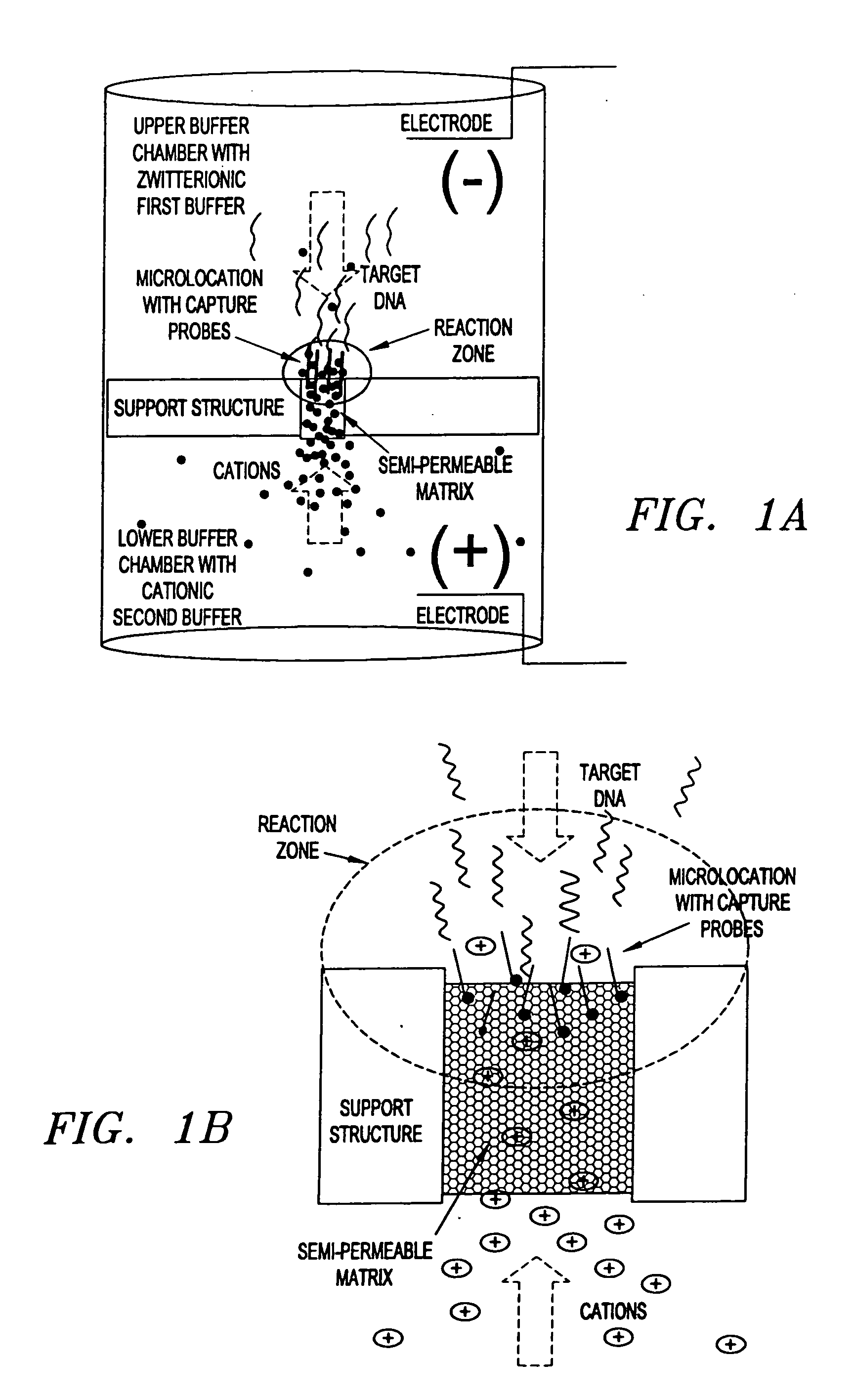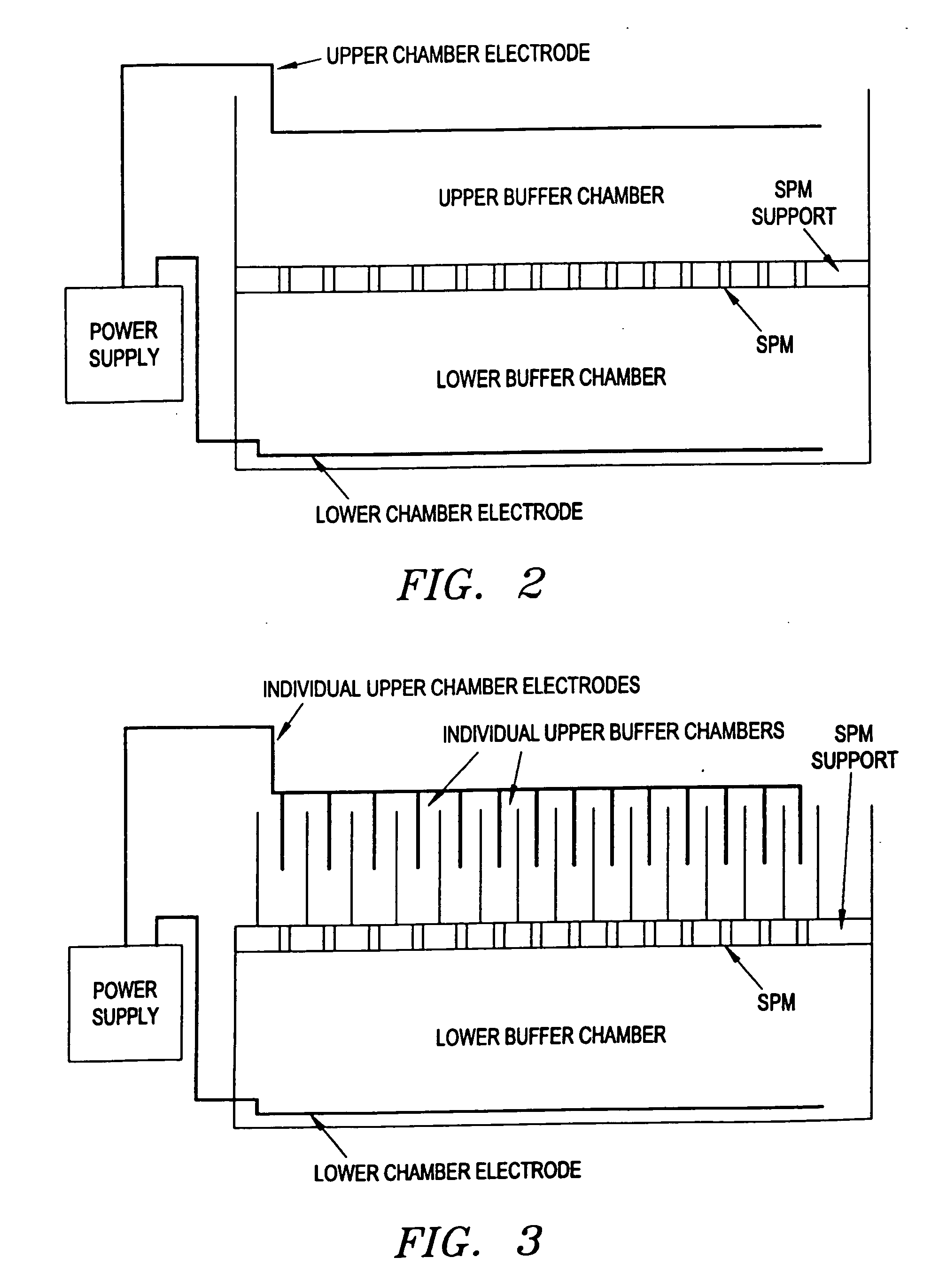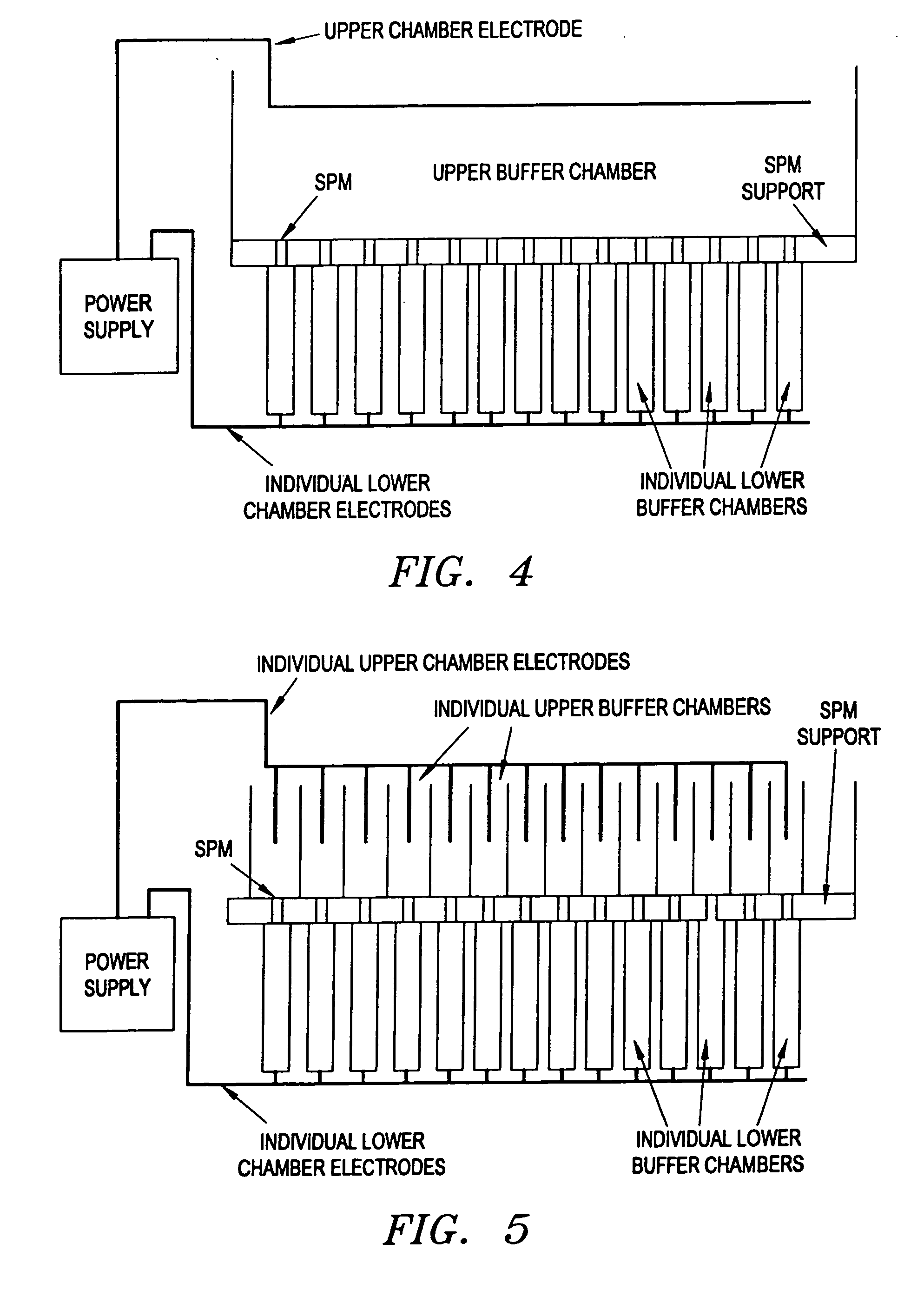Electronic systems and component devices for macroscopic and microscopic molecular biological reaction, analyses, and diagnostics
a technology of electronic systems and components, applied in the field of molecular biology, can solve the problems of complex and time-consuming, many techniques are limited in their application, and require a high degree of accuracy, and achieve favorable reaction zones for reactant molecules
- Summary
- Abstract
- Description
- Claims
- Application Information
AI Technical Summary
Benefits of technology
Problems solved by technology
Method used
Image
Examples
example 1
Semipermeable Matrix Preparation
Streptavidin-Agarose Preparation
2.5% glyoxal agarose (BioWhittaker) was prepared in water per manufacturer's instructions. Agarose solution was incubated at 60° C. until ready to use. Streptavidin (Boehringer Mannheim) was dissolved in 100 mM sodium phosphate, pH 7.4 to a final concentration of 5 mgs / ml. Fresh 200 mM sodium cyanoborohydride in sodium phosphate, pH 7.4 was prepared. Streptavidin-agarose (4:1),was mixed and incubated at 60° C. for 2 minutes.
Gels were cast in either cut down Pasteur pipettes (˜5 mm diameter gel tubes) or 1 mm holes drilled into an ABS plastic plate (for the device shown in FIG. 10). Pipettes received 150 microliters, and sample plate holes received 5 microliters of SA-GA. After gelling, cyanoborohydride solution was pipetted over the top of the gels and the reduction reaction allowed to proceed for 2 hrs at room temperature or 16 hrs at 4° C.
Streptavidin-Polyacrylamide Preparation
PEG-Streptavidin Synthesis:
A ...
example 2
Electronic Hybridization and Dehybridization
For this example, the gel tube apparatus illustrated in FIG. 12 was used with an agarose / streptavidin SPM synthesized as described in Example 1.
Attachment of Capture Oligonucleotides (Specific Binding Entity):
Upper and lower buffer reservoirs were filled with 50 mM histidine, pI. Specific capture ATA5 (5′ biotin-GATGAGCAGT TCTACGTGG [SEQ. ID NO. 1]) or nonspecific ATA4 (5′biotin-GTCTCCTTCC TCTCCAG [SEQ. ID NO.2]) oligos were pipetted onto the top of the gel (5 microliters 500 nM in 50 mM histidine, pI, 10% glycerol). The lower buffer reservoir was biased positive and the oligos electrophoresed into the gel for 2 minutes, 20V using a Bio-Rad PowerPac 1000 power supply. Reversing the bias for 2 minutes effected an electronic wash. Gel tubes were then rinsed in histidine buffer, pI.
Hybridization:
Upper buffer chamber was filled with 50 mM histidine, pI and the lower buffer was filled with 100 mM histidine, pH 5. BodipyTR labeled RCA5...
example 3
SNP Mutation Discrimination in H-Ras System
For this example, the gel tube apparatus illustrated in FIG. 12 was used with an agarose / streptavidin SPM synthesized as described in Example 1.
Capture:
Ras G wild type and Ras T mutant captures are loaded as per Example 2. (RAS G:5′ biotin-CACACCOGCG GCGCC [SEQ. ID NO.4], RAS T: 5′ biotin-CACACCGTCG GCGCC [SEQ. ID NO. 5])
Hybridization:
As per example 2 using BodipyTR labeled Ras C reporter complement (5′ btr-GGCGCCGCCG GTGTG [SEQ. ID NO. 6].
Stringency / Dehybridization:
As per example 2.
Results:
Hybridization signal was observed on both wild type and mutant gel caps before reversing the bias. By reversing the bias, mismatch signal was selectively removed after biasing 5 minutes, 70 V in 20 mm sodium phosphate, pH 7.4. A discrimination ratio of 79:1 was obtained.
Initial IntensityFinal IntensityWild type16479mutant1341
PUM
| Property | Measurement | Unit |
|---|---|---|
| electric potential | aaaaa | aaaaa |
| electric potential | aaaaa | aaaaa |
| electric potential | aaaaa | aaaaa |
Abstract
Description
Claims
Application Information
 Login to View More
Login to View More - R&D
- Intellectual Property
- Life Sciences
- Materials
- Tech Scout
- Unparalleled Data Quality
- Higher Quality Content
- 60% Fewer Hallucinations
Browse by: Latest US Patents, China's latest patents, Technical Efficacy Thesaurus, Application Domain, Technology Topic, Popular Technical Reports.
© 2025 PatSnap. All rights reserved.Legal|Privacy policy|Modern Slavery Act Transparency Statement|Sitemap|About US| Contact US: help@patsnap.com



